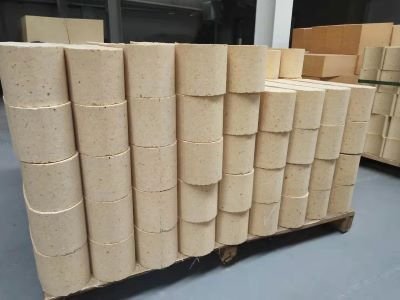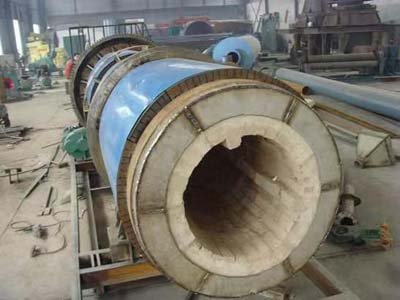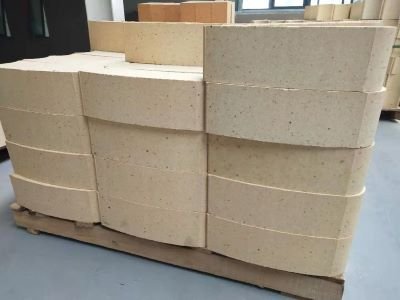High alumina bricks are refractory materials primarily composed of alumina (Al₂O₃), typically exceeding 48%. Their high-temperature stability, corrosion resistance, and mechanical strength far surpass those of ordinary clay bricks, making them the core “protective shield” of industrial kilns.
1.How to distinguish the grades of high alumina bricks?
According to the alumina content, it can be divided into the following categories.
First, premium-grade high alumina bricks have an Al₂O₃ content ≥85%. They offer the highest refractoriness, refractoriness under load, and corrosion resistance, making them suitable for use in extremely high-temperature environments.

Second, first-grade high alumina bricks have an Al₂O₃ content ≥75%. They offer refractoriness up to 1750-1790°C, a high refractoriness under load, and strong slag resistance.
Further, second-grade high alumina bricks have an Al₂O₃ content of 60%-75%. Their performance lies between those of first- and third-grade bricks, making them suitable for medium- and high-temperature industrial furnaces.
Finally, third-grade high alumina bricks have an Al₂O₃ content of 48%-60%. They are lower-cost and suitable for use in lower-temperature environments and relatively simple working conditions.
The key difference between them is that the higher the alumina content, the stronger the refractory properties, but also the higher the cost.
2. Five core uses
Industrial kiln linings
High alumina bricks are laid on the kiln’s inner walls, directly enduring temperatures of 1,000-1,800°C, preventing heat loss and structural damage.

For example, in the high-temperature section of a cement rotary kiln, grade 2 high alumina bricks are generally used to resist corrosion from alkaline gases.
Metallurgical Equipment Protection
In steel and aluminum smelting, this type of brick is mainly used in two places: the blast furnace body and hot blast furnace regenerator. The second is the electric arc furnace roof and side walls.
Petrochemical reactors
The linings of high-temperature cracking furnaces and catalytic reforming units rely on the chemical stability of this brick to resist corrosion from hydrocarbon gases.
Waste incinerators
When processing municipal waste, the bricks can resist acid gas and slag erosion and extend the life of the equipment.
Special high-temperature environments
For example, aerospace engine test benches and high-temperature barriers for nuclear reactors.
3.Why choose high alumina bricks?
There are mainly the following reasons.
First, they are heat-resistant. Their maximum operating temperature reaches 1,800°C, far exceeding clay bricks (1,400°C).
Second, they are corrosion-resistant. They resist attack by acids, alkalis, and molten metal slag, reducing kiln maintenance frequency.
Third, they are long-lasting. Under stable operating conditions, they can last 5 to 10 years.

Finally, they are energy-efficient and environmentally friendly. They reduce heat loss, thereby lowering industrial energy consumption.
In short, from steel mills to space laboratories, it has always protected the stable operation of high-temperature industries as a “fire-resistant guard.”
Choosing the right refractory brick manufacturer and the right grade of high alumina bricks is a key step in improving kiln efficiency and reducing costs!
